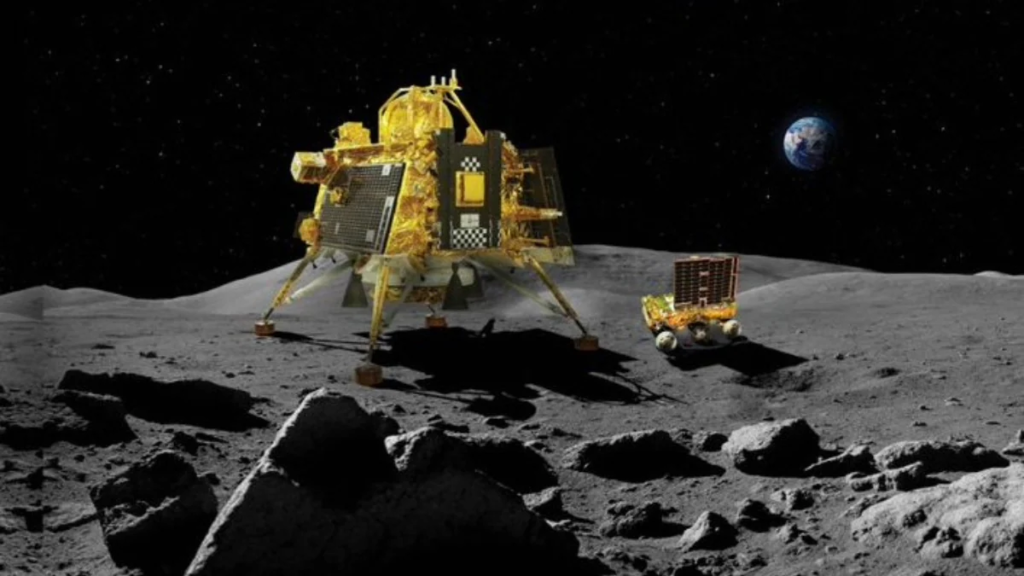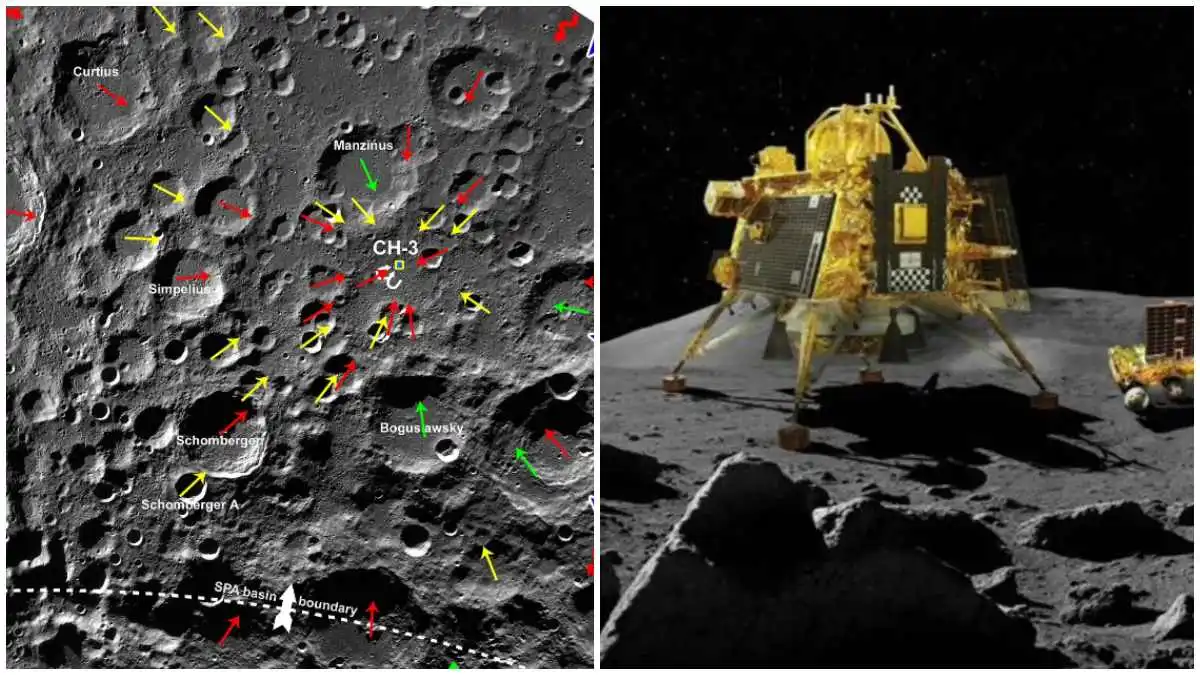The Chandrayaan 3 mission continues to achieve remarkable milestones, as India’s Pragyan rover has recently uncovered a significant lunar discovery. While traversing the highland terrain near its landing site on the Moon’s south polar region, the Pragyan rover identified an ancient, 160-kilometre-wide buried crater.
This extraordinary find is a testament to the ongoing success of the Chandrayaan-3 mission, which has provided valuable data to expand our understanding of the Moon’s geological history.
Significance of the Crater Discovery
The crater discovered by the Chandrayaan 3 rover is located approximately 350 kilometres from the South Pole-Aitken basin, the largest and oldest known impact structure on the Moon.
What makes this find even more remarkable is that the crater predates the South Pole-Aitken basin itself. The age of the crater, coupled with its location near one of the most significant lunar impact sites, offers scientists a rare glimpse into the Moon’s ancient past.
Read : Chandrayaan-3 Detects Mysterious Seismic Signals on Moon
Buried beneath layers of debris from subsequent impacts, including material from the South Pole-Aitken event, the crater had remained hidden for billions of years.
Read : Ranking the World’s Top 10 Strongest Space Agencies
As impacts over time caused the crater to degrade and accumulate layers of regolith, its structure became obscured. However, the data collected by Pragyan’s high-resolution navigation and optical cameras have revealed its full extent, offering new insights into lunar evolution.
A Window into the Moon’s Geological History
The Chandrayaan 3 rover’s discovery is not just another crater—it provides crucial evidence about the Moon’s formation and evolution. As one of the oldest known geological structures on the lunar surface, this buried crater holds material dating back to the Moon’s earliest days.
By studying this ancient impact site, scientists hope to unlock vital clues about the Moon’s geological history and the processes that shaped its surface over billions of years.

The debris from the South Pole-Aitken basin, combined with material from smaller craters and basins, has added hundreds of meters of regolith to the area where the Pragyan rover operates.
This thick layer of ancient material is essential for understanding the Moon’s unique landscape and its evolutionary timeline. The Chandrayaan 3 mission, with its latest discovery, has significantly advanced our knowledge of these processes.
Importance of the South Pole-Aitken Region
The location of this discovery, near the South Pole-Aitken basin, adds to its importance. As one of the largest and deepest basins in the solar system, the South Pole-Aitken region has long been considered a prime area for lunar exploration.
The basin’s formation nearly four billion years ago is believed to have significantly altered the Moon’s crust and mantle, and the material ejected from the impact offers scientists the opportunity to study some of the Moon’s most ancient rock formations.
The discovery of the buried crater, which is believed to be even older than the South Pole-Aitken basin, could reshape current theories about the Moon’s impact history.
This ancient crater provides a window into the Moon’s early years, helping scientists reconstruct the sequence of events that shaped its surface and understanding the history of impacts that occurred in the solar system’s early period.
Pragyan Rover’s Contribution to Lunar Exploration
Since its deployment as part of the Chandrayaan 3 mission, the Pragyan rover has been steadily beaming back data that has already resulted in groundbreaking discoveries.

Its exploration of the Moon’s south polar region has provided scientists with crucial information about lunar geology. The discovery of this ancient crater adds to a growing list of significant finds made by the rover, reinforcing the success of the Chandrayaan-3 mission.
The South Pole-Aitken region, where the Pragyan rover is operating, is considered rich in ancient material due to its history of impacts. This makes it a key area for studying the Moon’s early history.
The rover’s data collection, particularly from heavily cratered regions like this, is vital for expanding our understanding of lunar formation processes and the role of early impacts in shaping planetary bodies.
Global Interest in Chandrayaan 3 Discoveries
The recent findings by the Chandrayaan 3 rover have drawn international attention, with scientists from around the world eager to analyze the data it has collected.
The ancient crater’s discovery is just one of the many significant contributions that the mission has made to lunar science. As the Pragyan rover continues its journey across the Moon’s surface, it is expected to uncover even more valuable insights into the history and evolution of Earth’s only natural satellite.
This discovery not only holds promise for lunar science but also reinforces India’s growing role in space exploration. With the Chandrayaan 3 mission, India has demonstrated its ability to conduct successful lunar missions that deliver critical data and discoveries of global significance.
The Chandrayaan 3 mission’s success, highlighted by the Pragyan rover’s discovery of the ancient buried crater, sets the stage for continued exploration of the Moon’s south polar region. The rover’s findings could provide key insights for future lunar missions, including manned explorations and efforts to establish a permanent presence on the Moon.
As the Chandrayaan-3 mission moves forward, the data collected will help scientists develop a more comprehensive understanding of lunar geology, particularly in regions that have remained unexplored.
The discovery of ancient craters and other geological structures will undoubtedly be pivotal in shaping our understanding of the Moon and its place in the history of the solar system.
let’s enjoy few years on earth with peace and happiness….✍🏼🙏

